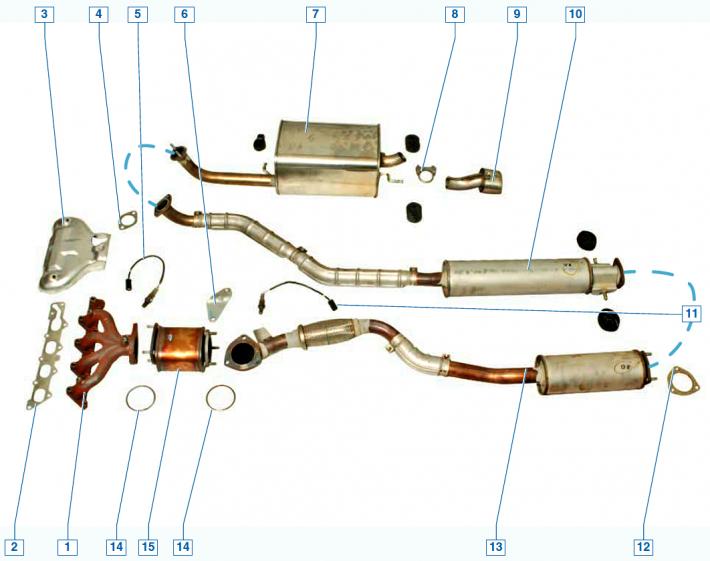
Exhaust system: 1 - exhaust manifold; 2 — a sealing lining of a collector; 3 - heat shield; 4 - gasket of the main muffler pipe flange; 5 - control oxygen concentration sensor; 6 - catalytic converter bracket; 7 - main muffler; 8 — a collar of fastening of a nozzle of the main muffler; 9 - nozzle of the main muffler; 10 - second additional muffler; 11 - diagnostic oxygen concentration sensor; 12 - sealing gasket of the flanges of the first and second additional mufflers; 13 - an intermediate pipe with a metal compensator and the first additional muffler; 14 - sealing gasket of the flanges of the catalytic converter; 15 - catalytic converter.
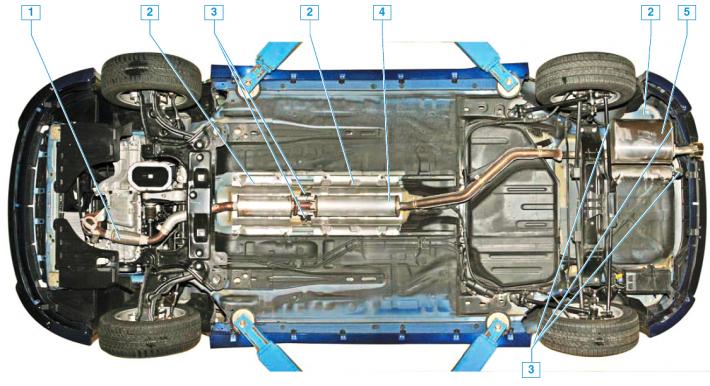
Location of the exhaust system on a hatchback car: 1 - an intermediate pipe with a metal compensator and the first additional muffler; 2 - heat shield; 3 — a suspension bracket of system of release; 4 - second additional muffler; 5 - main muffler
The exhaust system consists of an exhaust manifold, an exhaust gas catalytic converter, two additional and main mufflers and pipes connecting them.
The exhaust manifold is attached to the cylinder head studs with ten nuts.
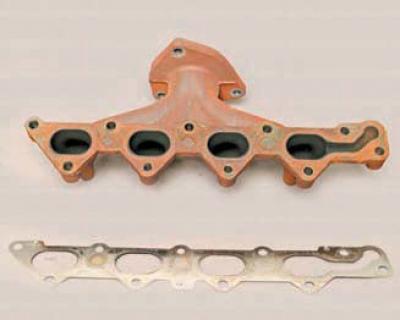
A metal gasket is installed between the exhaust manifold and the cylinder head.
The catalytic converter is attached to the exhaust manifold flange with three studs and nuts.
The intermediate pipe flange is attached to the other flange of the catalytic converter with three studs and nuts.
Both connections are sealed with heat-resistant gaskets.
A control sensor for the oxygen concentration in the exhaust gases is installed in the exhaust manifold in front of the catalytic converter (Lambda probe).

Installation location of the control oxygen concentration sensor in the exhaust manifold
After the catalytic converter, a second sensor is installed in the intermediate pipe, which performs the functions of a diagnostic one.
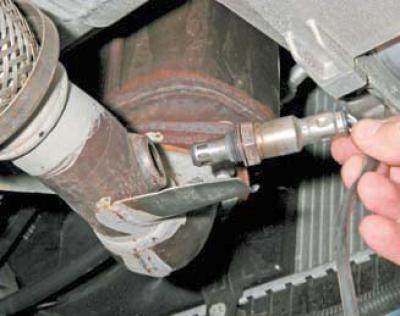
Installation location of the diagnostic oxygen concentration sensor in the intermediate pipe
The catalytic converter meets Euro 4 emission standards by reducing emissions of carbon monoxide, nitrogen oxides and unburned hydrocarbons.
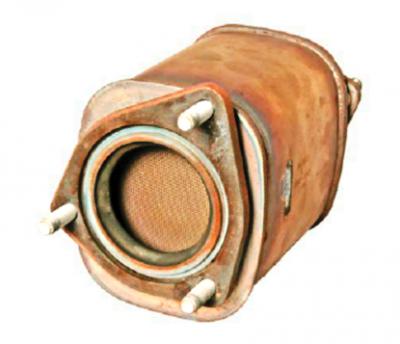
catalytic converter
In the presence of lead compounds in the exhaust gases, the catalytic converter and oxygen concentration sensors quickly fail.
Therefore, the operation of the car, even for a short time, on leaded gasoline is strictly prohibited.
The reason for the failure of the converter may also be a faulty ignition system or power supply system.
In the event of a misfire, unburned fuel, entering the converter, burns out and disables the block with catalysts, which can lead to blockage of the exhaust system and stop (or severe loss of power) engine.
A metal compensator is built into the front part of the intermediate pipe, and the first additional muffler is built into the rear part.
The flange of the first additional silencer located on the intermediate pipe is connected to the flange of the second additional silencer.
A sealing gasket is installed between the flanges to ensure tightness.
On the bottom of the body, above the additional and main mufflers, heat shields are installed that protect the anti-corrosion coating from overheating.
The pipe of the additional muffler has a flange connection with the pipe of the main muffler.
A sealing gasket is also installed in the connection of their flanges.
The exhaust systems of hatchback and sedan cars differ only in the rear pipes of the main mufflers.
The entire system is suspended from the body on five rubber cushions.

Pillows of a suspension bracket of system of release of the fulfilled gases: rear suspension cushion of the main muffler; front suspension cushion of the main muffler; intermediate pipe suspension cushion and additional mufflers;
The catalytic converter, intermediate pipe and mufflers are non-separable units; if they fail, they must be replaced with new ones.
Maintenance of the exhaust system consists in its periodic inspection, checking for tightness of connections and the presence of through corrosion, tightening loose connections and replacing rubber suspension pads.
